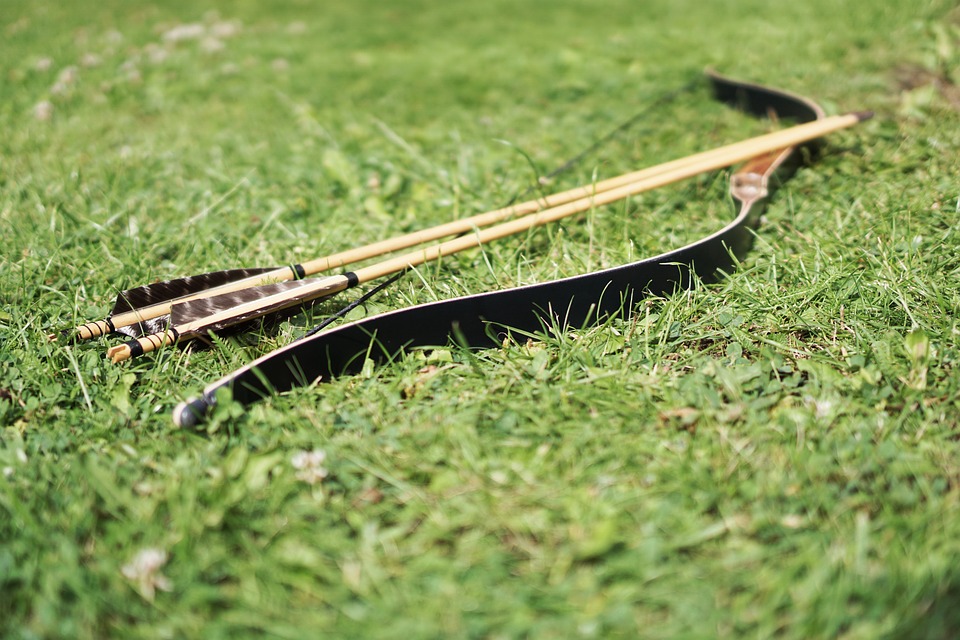by Alex Hopson
Bows and arrows have been present in Egyptian culture since it’s predynastic origins. The nine bows symbolise the various peoples that had been ruled over by the pharaoh since Egypt was united. The goddess Nekhbet symbolised the unity of the peoples under the pharaoh, her epitaph was ‘She who binds nine bows’ The arrow itself was a symbol of divine power, which was personified by Neith, the goddess of war, whose cult was symbolised by two crossed arrows. Two crossed arrows could also represent the power of Hemsut, which was a female form of Ka.
Arrows could symbolise the sun’s rays; Atum was the archer who fired sunbeams as though they were arrows. At the Ascension of the king, he would symbolically fire an arrow in each of the four cardinal directions; this symbolised his power over the Four Corners of the world.
Bows were originally made from antelope horns bound to a piece of wood in the centre; it is this form of bow, which is shown in the hieroglyph of a bow. This was around in prehistoric times and many flint arrowheads have been found. Later bows built from a single piece of wood replaced the earlier antelope horn bows.
Usually these bows were made from Acacia wood and strung with animal fibre, the arrows were made from cane with flint, bone or bronze heads. When the Hyskos came into contact with the Egyptians they brought with them the composite bow which was far more powerful than its predecessors were. Bows often featured in burials, something that is connected to the goddess Neith’s protective role.

